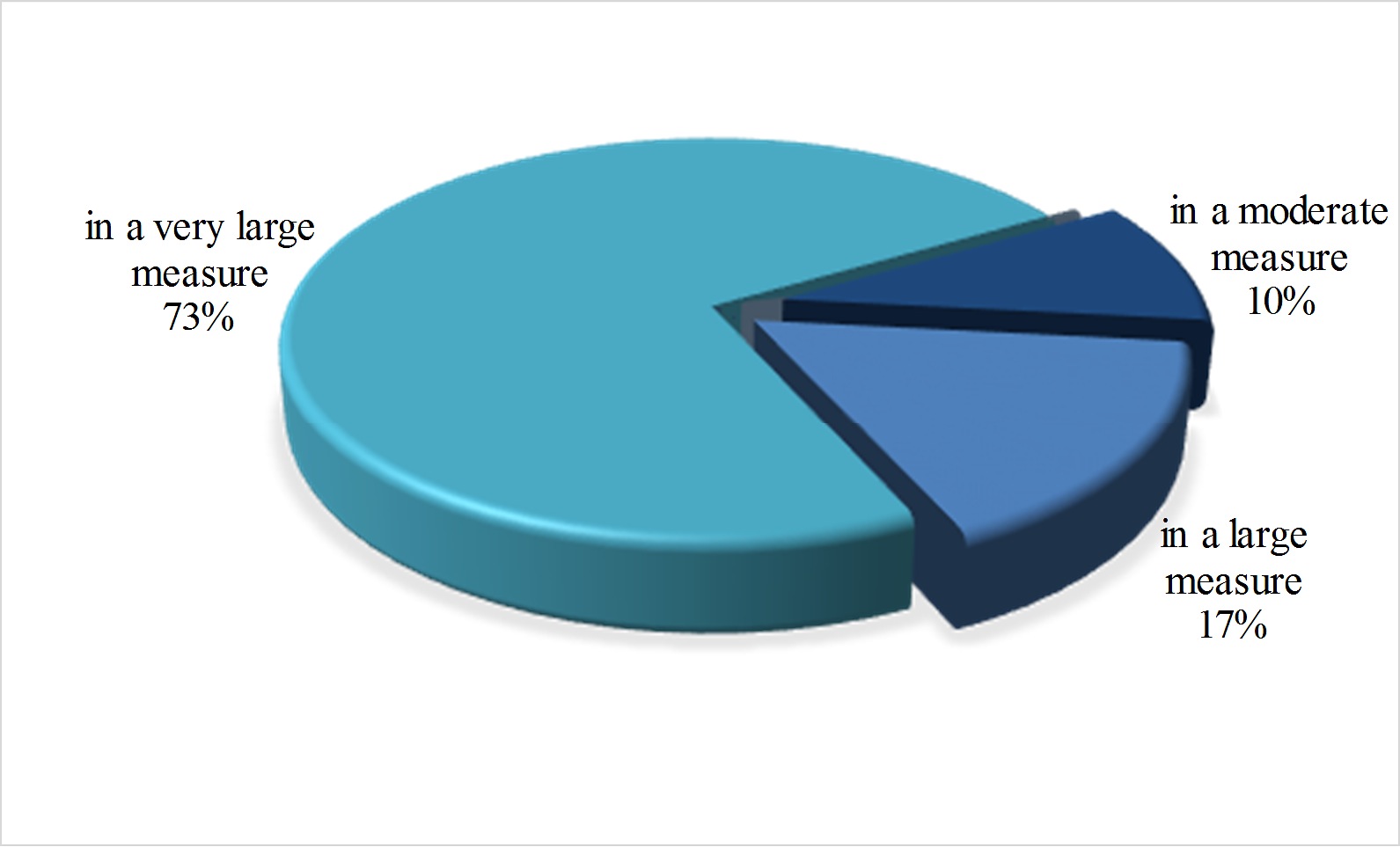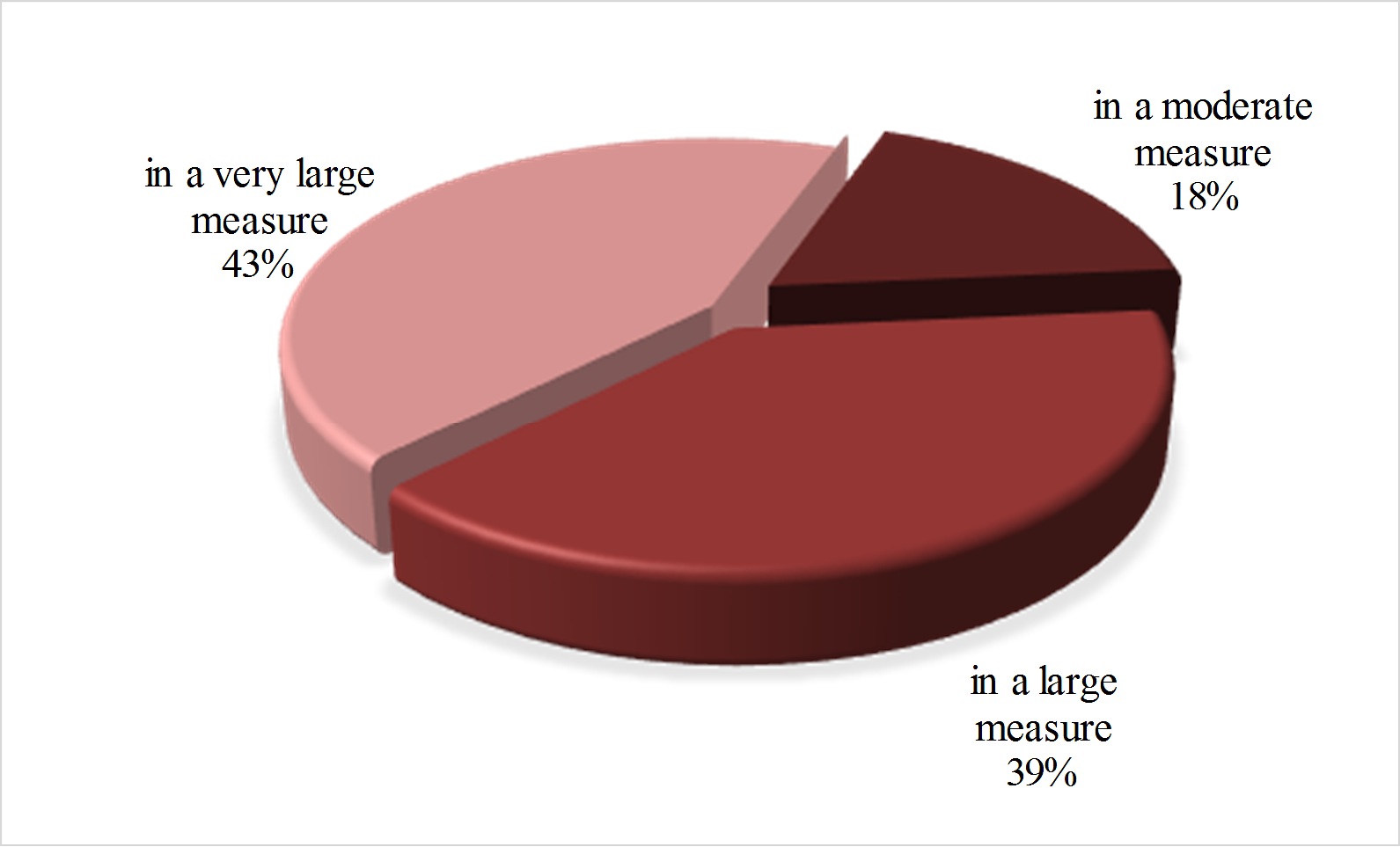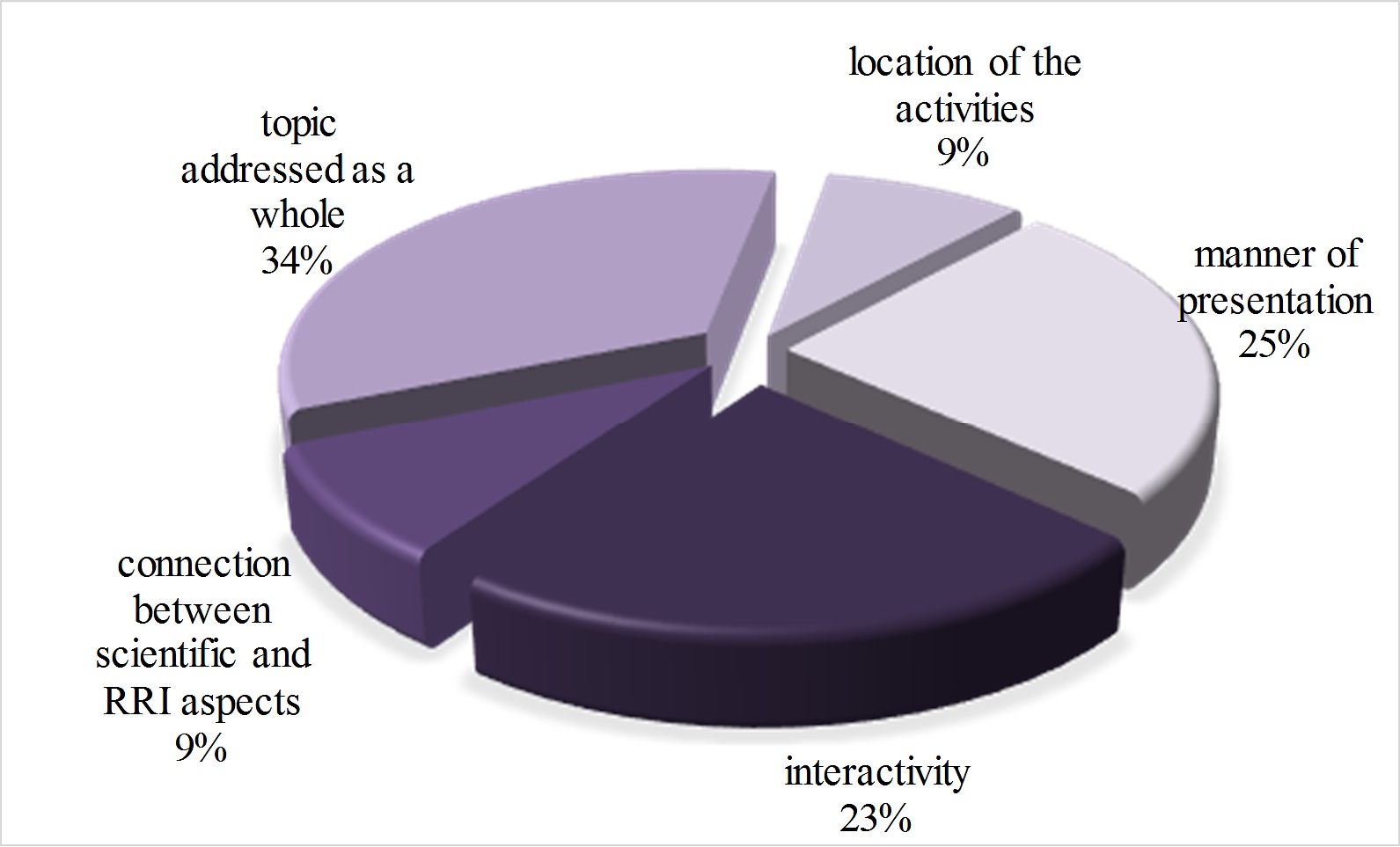Connecting Education and Research: Introducing RRI in Solar Energy Non-formal Educational Activities
Abstract
It is totally agreed that our sun represents an inexhaustible source of energy. It has a major role on maintaining the life on the planet and keeping the temperature of Earth in vital limits. On the other hand, it represents an inexhaustible source of energy. Using the solar energy - a clean form of energy (the “green one”) -, the entire world can contribute to a major reduction of the pollutant emissions. However, the scientific, social, economic and moral implications of producing and using of solar energy, represents an important issue to be discussed and analyzed by both education and research. In this respect, the paper illustrates the results of implementing in several non-formal contexts - activities with the young students, organized and performed during the week: “
Keywords: Educationresearchsolar energyResponsible Research and InnovationIRRESISTIBLE project
Introduction
It is commonly agreed that new teaching pedagogy (mostly based on
Non-formal education - a bridge between education and research. Activities proposed in the frame of IRRESISTIBLE Project
Can non-formal education play the role of an interface between education and research?
We have, on the one hand, a valuable setting that gather educational activities in a framework located away from the educational system, but also situated inside it (cultural environments, museums, libraries, theatres), benefiting of the qualified guidance of teachers or experts who have expertize on designing educational activities (Cristea, 1998). On the other hand, the research concept and its related activities is not so known by students. Going further, the RRI paradigm was completed unknown, also by the science teachers, two years ago. In Romania, there was no evidence in the actual science curriculum about RRI, and having the opportunity to participate in the
However, RRI has its own specificity, making the participants to each educational demarche to become mutually responsive for developing a better understanding of scientific and ethical issues (Okada, 2014). But in this respect, the Community of Learners considered and proposed important cutting edge scientific issues related to
4 units have been designed to be undertaken in non-formal educational settings (in our case: Scientific and Technological Research Institute, museum and library), targeting on presenting the applications of nanomaterials in 4 specific areas:
All the units consist on 4 distinguish sections which lead the teachers and experts in the interventional process (Petrescu, Gorghiu, & Lupu, 2015):
Introduction - includes: the unit title, addressed educational level, thematic area, activity objectives, proposed resources and information sources, estimated duration, activity abstract, considerations related the unit uniqueness;Educational Scenario - a matrix in which is detailed the activity sequences, based on the use of the6E Model : engage, explore, explain, elaborate, exchange, evaluate;Teacher’s Guide - a description of the students’ competences which have to be acquired, the expected activity outcomes, the teaching strategy and the necessary scientific background;Evaluation Guide - a description of the proposed assessment methodology.
We have to admit that a big chance for implementing such activities was offered by the national week “
Even all the topics took into considerations a series of novelties, we have to admit that the most difficult demarche - to be addressed to students - was that directed on renewable (solar) energy. In this sense, the students’ participation in the building and laboratories of
Why is important to know Solar Energy issues?
The main factors of influence for the life and economy of both developed and developing countries are:
In fact, the source of the renewable energy sources is the sun - a fusion reactor that has been burning over 4 billion years. It provides sufficient energy just in one minute capable to supply the entire world energy which is needed for a period of one year. In a day, the sun provides more energy than the world actual population would consume in 27 years. Practically, the amount of solar radiation striking the earth over a three-day period is equivalent to the energy stored in all fossil energy sources (Kibria, et al., 2014).
Solar energy is free and, as many specialists consider, it represents an inexhaustible resource because the Sun it has not changed dramatically for over four billion years, and will remain fairly stable for more than five billion more.
Today, the solar energy is use in the two forms - thermal and photovoltaic. The first one concentrates the sunlight, converts it into heat, and applies it to a steam generator or engine to be converted into electricity, in order to heat water, warm buildings, generate electricity, dry or destroy dangerous waste. Electricity is generated when the heated fluid drives turbines or other machinery. The second form of solar power produces electricity directly without moving parts (Kolhe, & Khot, 2015).
Nowadays, the photovoltaic system (PV) is based of solar cells, made of silicon. A matrix of cells wired together, constitute a solar module, and solar modules wired together constitute a panel. A group of panels is defined as an array, and several arrays representing an array field.
The PV power has several advantages over the wind-power, hydro-power, and solar thermal power. The latter three, require turbines with moving parts that are noisy and require maintenance. In this respect, the solar energy is the fastest growing segment of the PV market. In terms of costs, it is more convenient than the extension of the power lines into remote areas, where the citizens cannot afford to pay for conventional electricity.
The PV solar power has a series of advantages, starting with the non-polluting feature, continuing with the required little maintenance, and finishing with the life (20-30 years) while running on low costs. More, several technologies that use solar radiation have been designed, developed and used, like:
Photovoltaic Systems - produce electricity directly from sunlight;Solar Hot Water - heat the water with the help of solar energy;Solar Electricity - use the sun heat to produce electricity;Passive Solar Heating and Day Lighting - use solar energy to heat and light buildings;Solar Process Space Heating and Cooling - industrial and commercial uses of the sun heat.
Finally, it must be mentioned that remote areas are able to produce their own electricity, by building solar systems. Also, the applications of solar power can be installed at home or in schools, having a safety and noiseless functioning, in places where extra developments are not required.
Methodology
As previously mentioned, more than 1000 students (including primary school students (3rd and 4th forms), lower secondary ones (5th - 8th forms) and upper secondary ones (9th - 12th forms)) were engaged and participated to the activities proposed by the “
In the final part of the activity, students were asked to fill in a questionnaire, with the view to create an image related to the impact produced by such demarche. The questionnaire consisted of five items, with possible answers defined as a 5-steps
The data collected from the questionnaire were introduced in an Excel spread-sheet and processed using statistical mathematics methods.
Results and Discussion
The “
(a) understanding the specific physical phenomena, strongly related to the operation of photovoltaic / solar thermal panels;
(b) improving the students’ knowledge related to the physical features of the photovoltaic installations, enriching in this sense, their background learnt in classroom or in school Physics laboratory;
(c) applying the learnt and debated concepts in solving various tasks / problems concerning the estimation of the costs for a specific solar installation;
(d) developing a favourable attitude related to the green energy production and for reducing the household energy consumption, in strong connection with the RRI principles.
More, the experts and teachers tried to make students aware on the research possibilities and opportunities which exist at local, regional and national levels, but also on learning novelties and innovative aspects of science and technology.
Illustrating how important is the research for transferring to industry the novelties in the area of nanomaterials and solar energy, the experts insisted on the RRI dimensions, trying to sensitize the students to feel a responsible attitude towards the research undertaken in the related areas, with important achievements in our everyday life. Students were also asked to express personal point of views concerning the engagement of the social actors in the scientific research process, and were invited to discuss about the ethical principles that must govern the research process.
The students’ feedback was positive and it was clearly manifested during the whole time of the performed activities. The impact was favorable taking into account that they found the entire demarche as interesting and appropriate to enrich their scientific knowledge in a respectful measure (in this respect, the percentage of 73% who mentioned “

The same positive students’ feedback was recorded in relation to the usefulness of the activities, taking into account that solar energy technology is a friendly and zero pollutant one, with real possibilities to be introduced in their households in different manners. Starting from simple home-devices to intelligent houses applications, to know more about this area seems to be also very useful for a future carrier.
In this sense, it is heartening that more than 80% of students appreciated that the Unit activities were useful in relation to their daily life, but also considering that such information could be exploited in their future carriers (43% mentioned “

Students were also requested to indicate what was the main aspect that produced a major impact on them, or what they did like more during the performed activities. Their answers are illustrated in a condensed manner in figure

Conclusion
The non-formal educational activities represent proper frames to enrich the students’ knowledge, to stimulate and strengthen the development of their personality, to work in groups, to offer access to cutting edge scientific novelties, to try to build a bridge between education and research.
Offering access to this format (as designed in the IRRESISTIBLE project), teachers, expert and researchers found feasible options for scientific and educational activities which facilitate the learning in a powerful measure, arouse the curiosity and interest for science, raise the implication into the scientific area, educate the young generation in line with the principles proposed by RRI paradigm.
It is clear also that by multiplying such demarches, the young generation will become more friendly with science, will be more attracted by an area which was widowed too much time by the interest of the young people in the beginning early years of this century, and will take into consideration the preparation for a future scientific career.
Acknowledgement
This work was funded through the Seventh Framework Programme Project “IRRESISTIBLE - Including Responsible Research and Innovation in Cutting Edge Science and Inquiry-based Science Education to Improve Teacher's Ability of Bridging Learning Environments” - a coordination and support action under FP7-SCIENCE-IN-SOCIETY-2013-1, ACTIVITY 5.2.2 “Young people and science” - Topic SiS.2013.2.2.1-1: Raising youth awareness to Responsible Research and Innovation through Inquiry Based Science Education. This project has received funding from the European Union’s Seventh Framework Programme for research, technological development and demonstration, under grant agreement no 612367. The support offered by the European Commission, through the project mentioned above, is gratefully acknowledged.
References
- Athienitis, A. K., & Santamouris, M. (2002). Thermal analysis and design of passive solar buildings. London: James & James.
- Cristea, S. (1998). Dicționar de termeni pedagogici. București: Editura Didactică și Pedagogică.
- European Union. (2014). Responsible Research and Innovation. Europe’s ability to respond to societal challenges. https://ec.europa.eu/research/swafs/pdf/pub_rri/KI0214595ENC.pdf, accessed 2016-06-30.
- Gorghiu, G., Gorghiu, L. M., & Ion, M. R. (2014). Promoting Responsible Research and Innovation through a Specific Teaching Module on Nanomaterials. Research Report no. 176, 12th European Conference on Research in Chemical Education: “New Trends in Research-based Chemistry Education” (ECRICE 2014), Book of Abstracts, University of Jyväskylä, 157.
- Kibria, M. T., Ahammed, A., Sony, S. M., Hossain, F., & Islam, S.U. (2014). A Review: Comparative studies on different generation solar cells technology. Proceedings of 5th International Conference on Environmental Aspects of Bangladesh, 51-53.
- Kolhe, M. R., & Khot, P. G. (2015). Alternative Energy: A Special Reference to Solar Energy. International Journal of Management, 6(9), 29-43.
- Okada, A. (2013). Scientific Literacy in the Digital Age: Tools, Environments and Resources for co-Inquiry. European Scientific Journal, 4, 263-274.
- Petrescu, A. M. A., Gorghiu, G., Lupu, R. (2015). Non-formal Education - Frame for Responsible Research and Innovation Demarches, Procedia - Social and Behavioral Sciences, 180, 682-687.
- Shulman, L. (1987). Knowledge and Teaching: Foundations of the New Reform. Harvard Educational Review, 57 (1), 1-23.
Copyright information

This work is licensed under a Creative Commons Attribution-NonCommercial-NoDerivatives 4.0 International License.
About this article
Publication Date
22 December 2016
Article Doi
eBook ISBN
978-1-80296-017-4
Publisher
Future Academy
Volume
18
Print ISBN (optional)
-
Edition Number
1st Edition
Pages
1-672
Subjects
Teacher, teacher training, teaching skills, teaching techniques, special education, children with special needs
Cite this article as:
Gorghiu, G., Petrescu, A. A., & Măntescu, G. (2016). Connecting Education and Research: Introducing RRI in Solar Energy Non-formal Educational Activities. In V. Chis, & I. Albulescu (Eds.), Education, Reflection, Development - ERD 2016, vol 18. European Proceedings of Social and Behavioural Sciences (pp. 472-479). Future Academy. https://doi.org/10.15405/epsbs.2016.12.58

